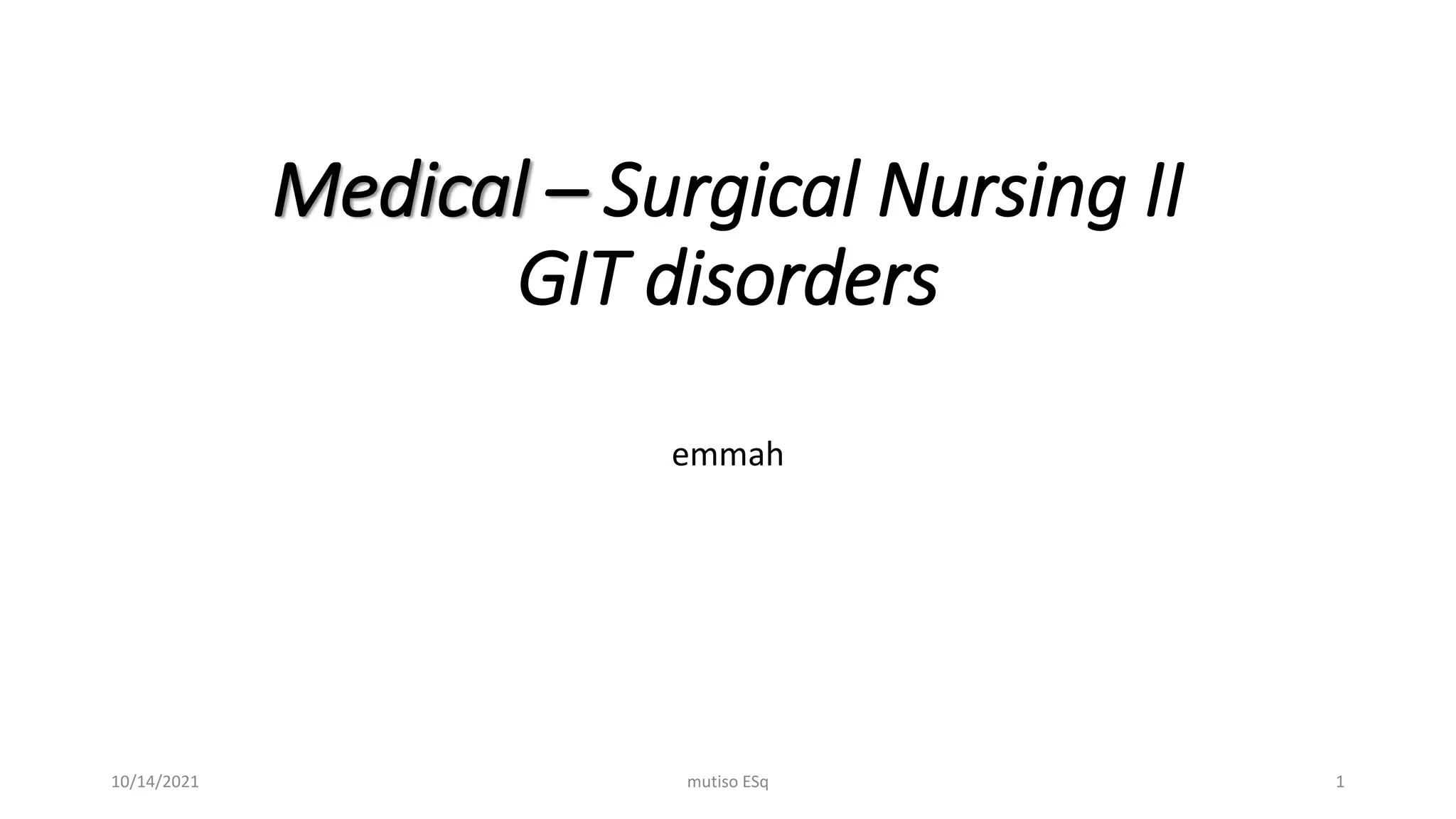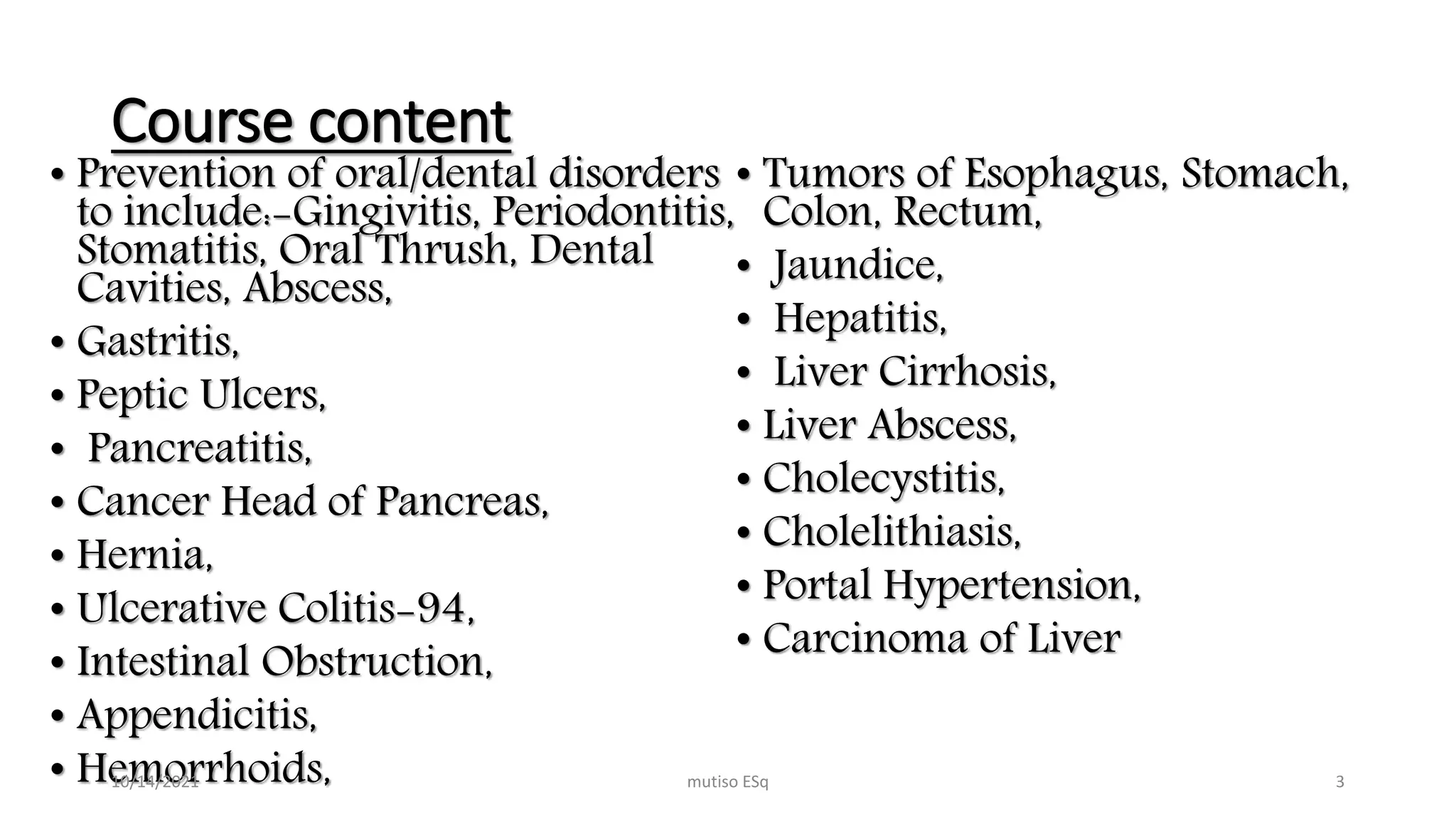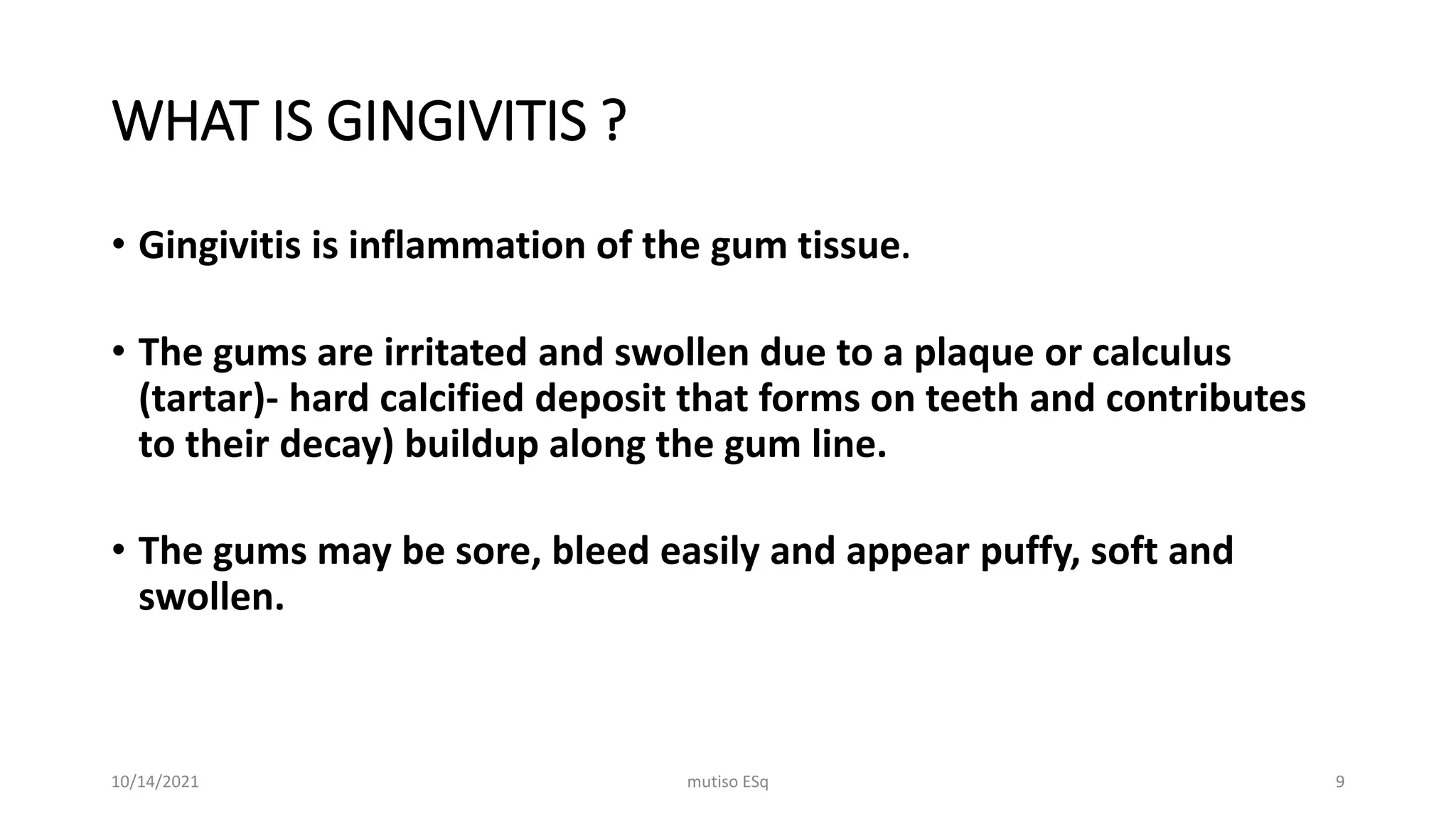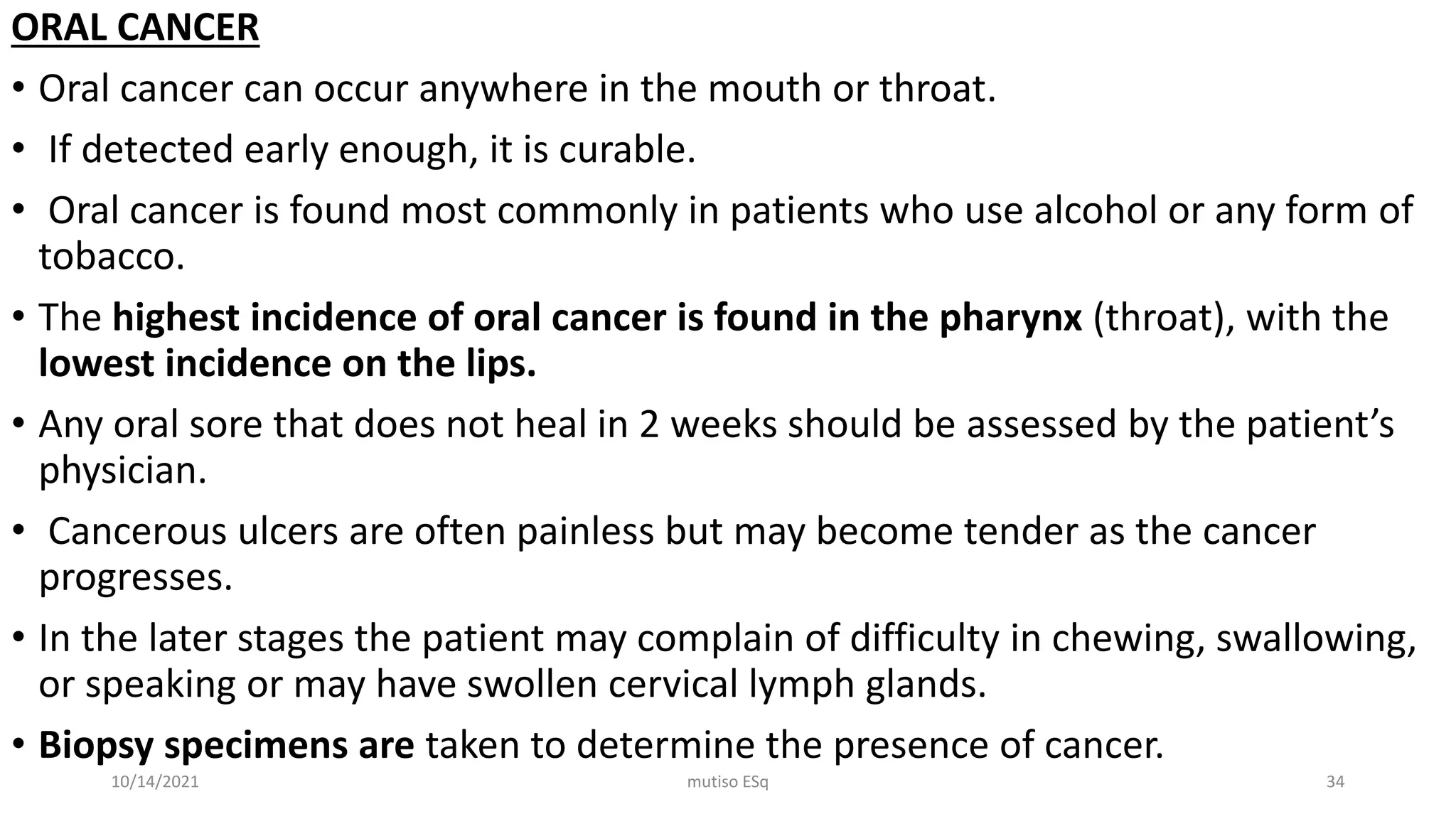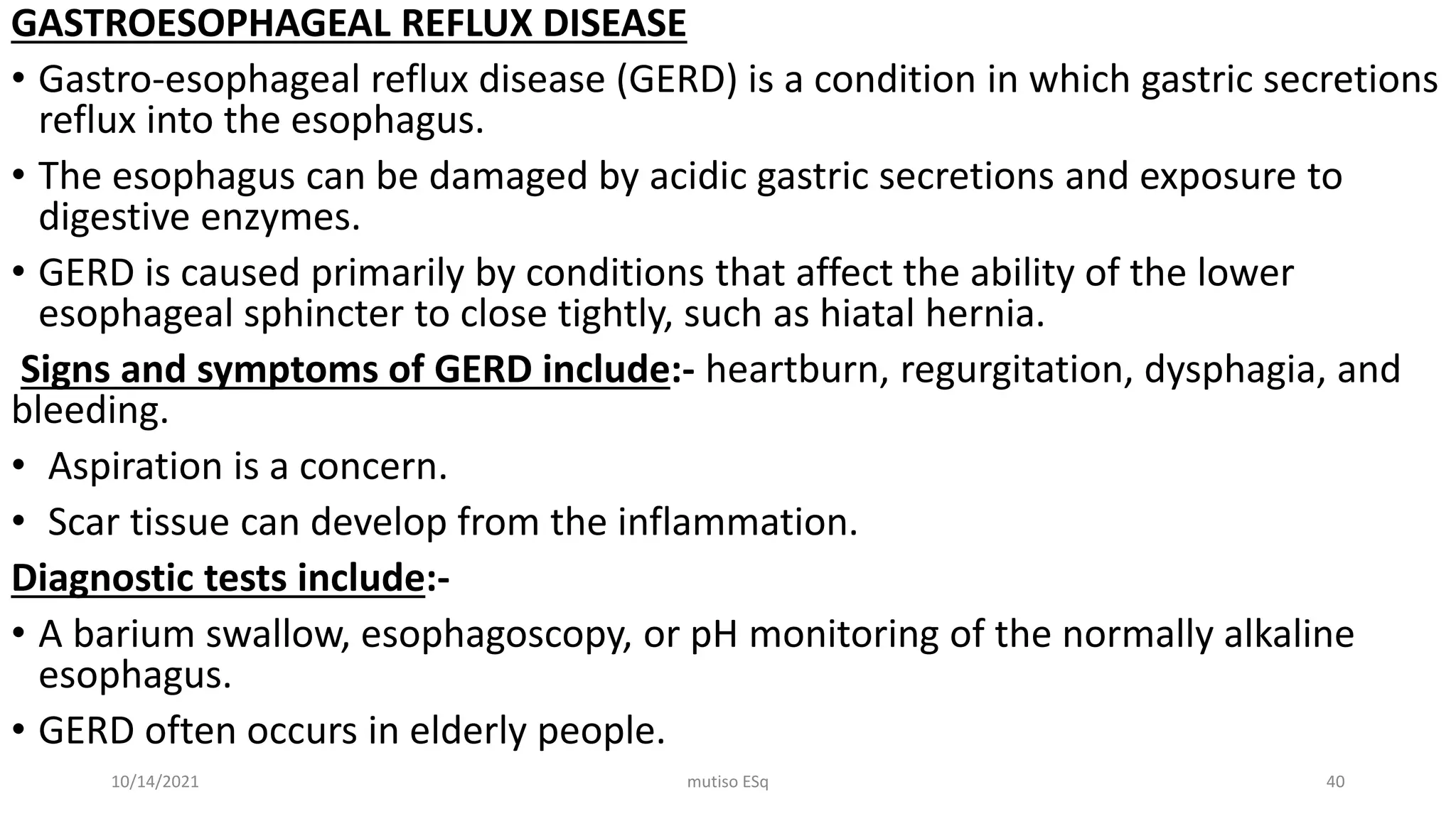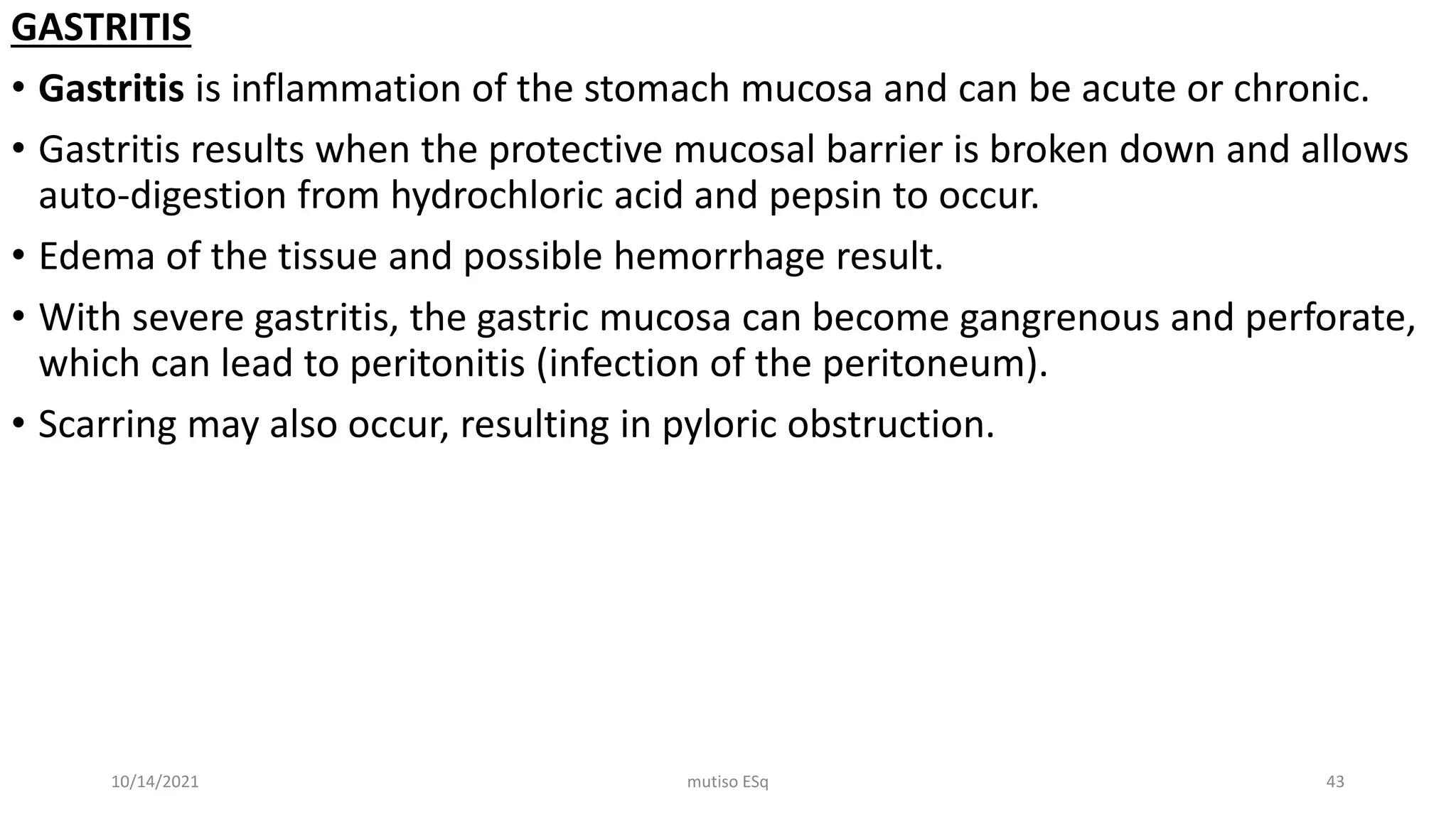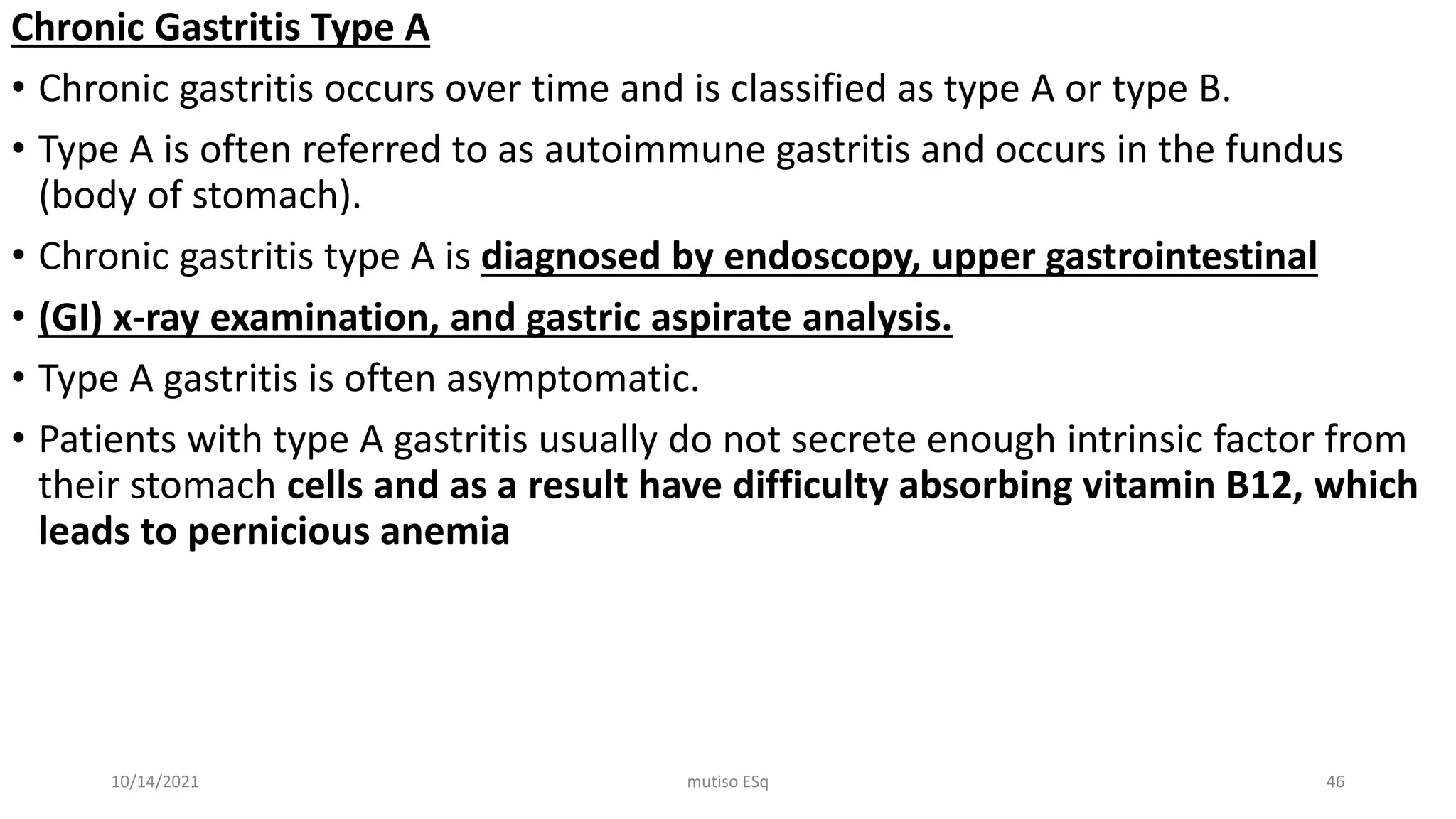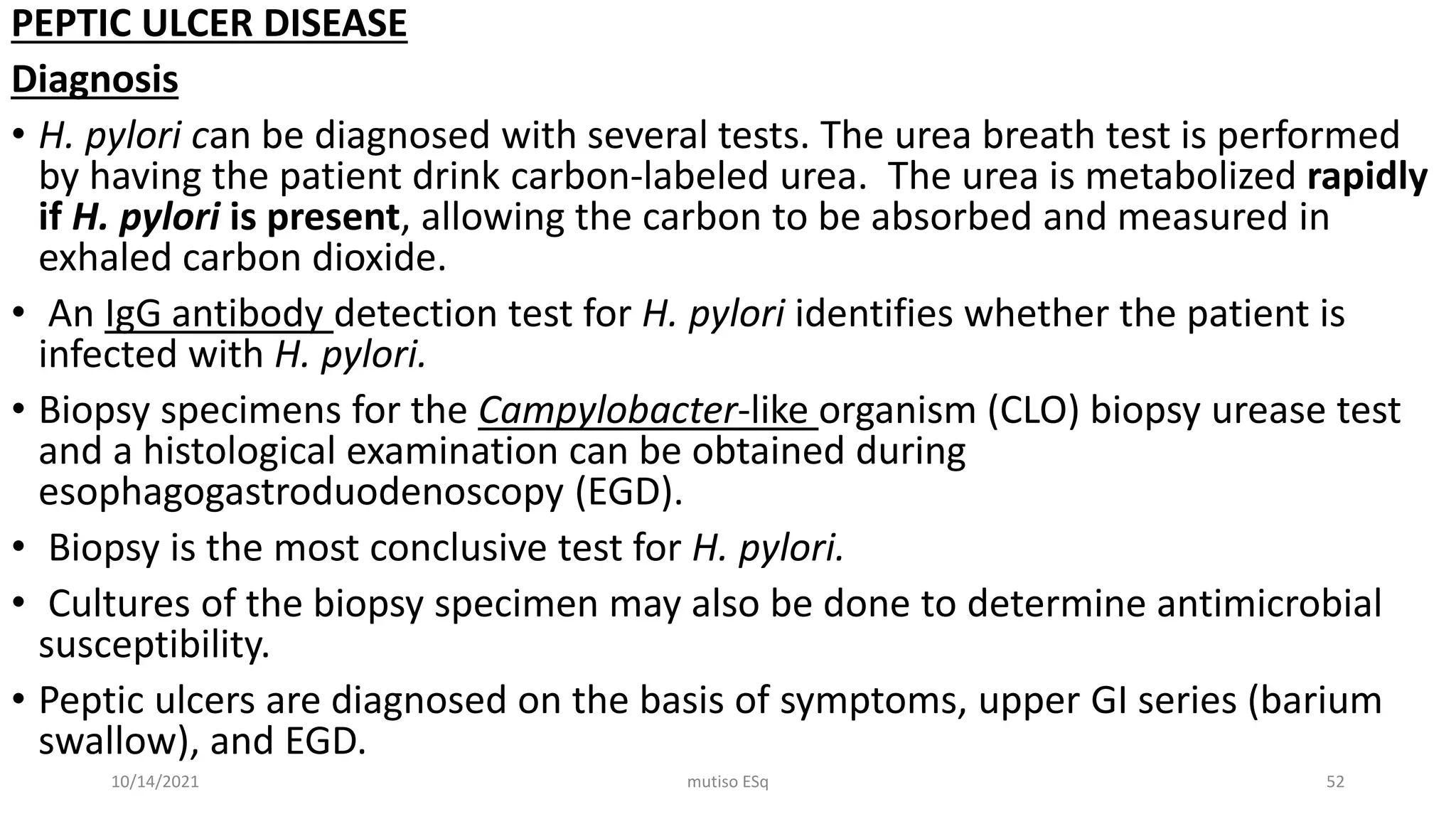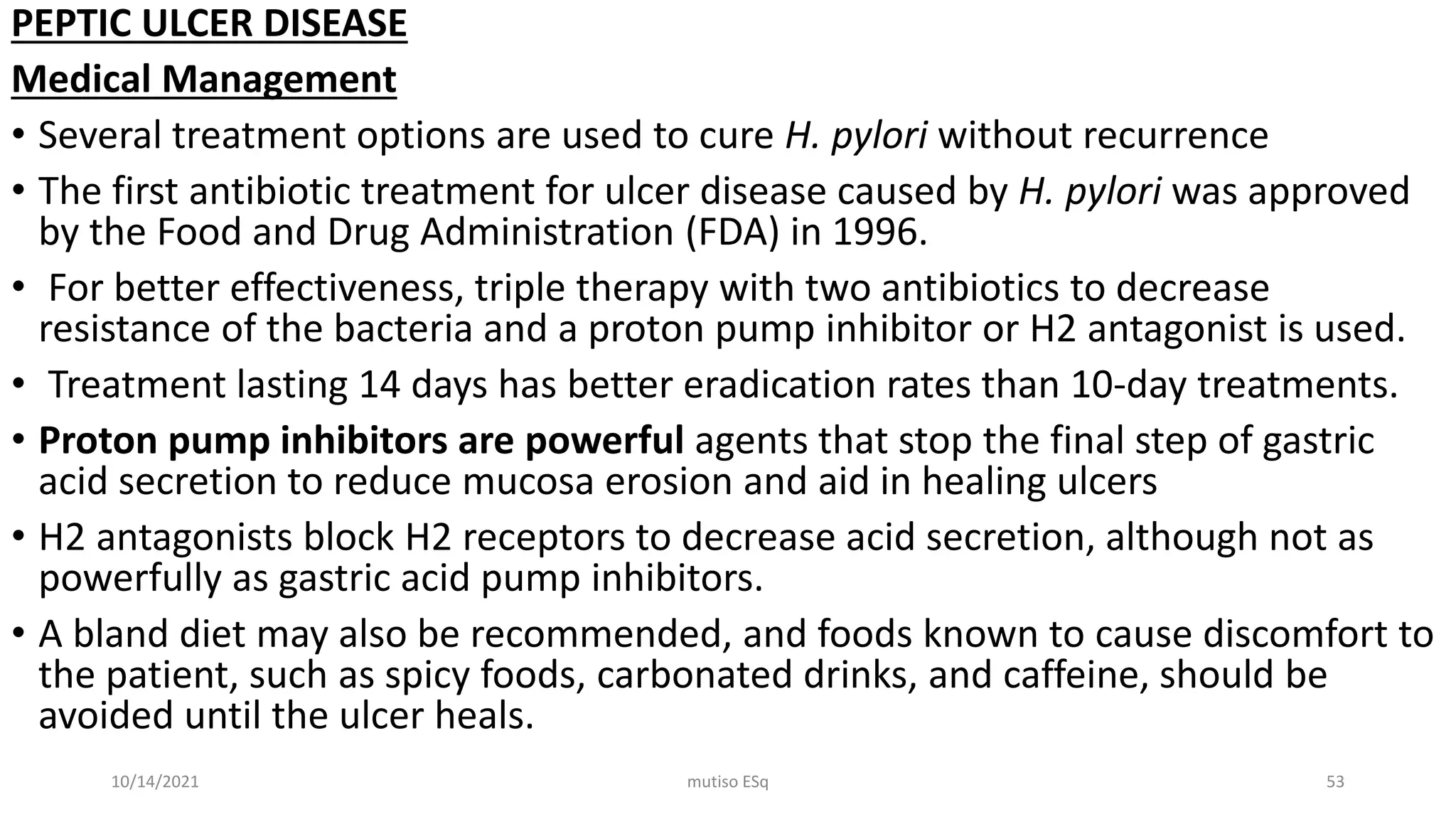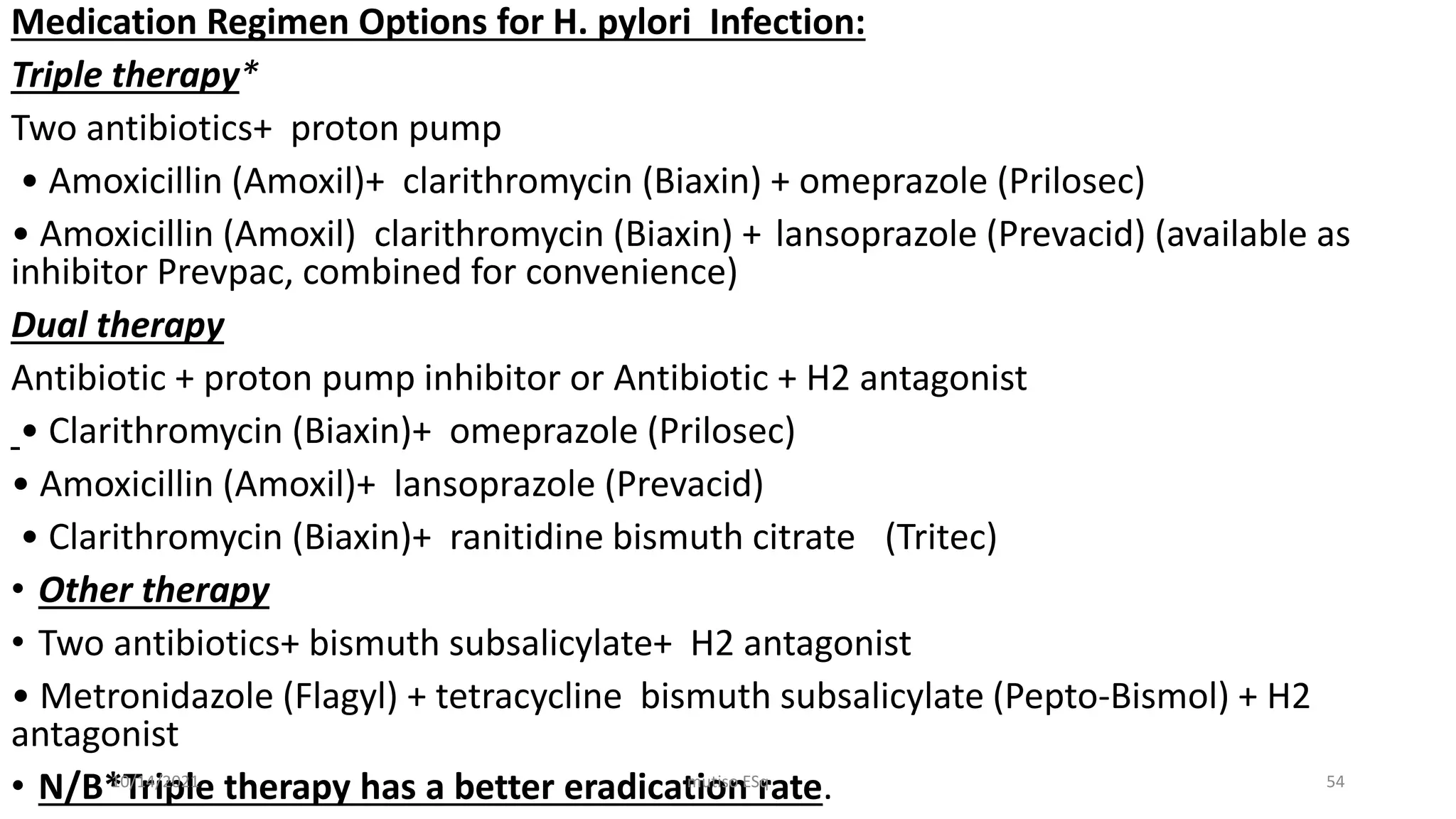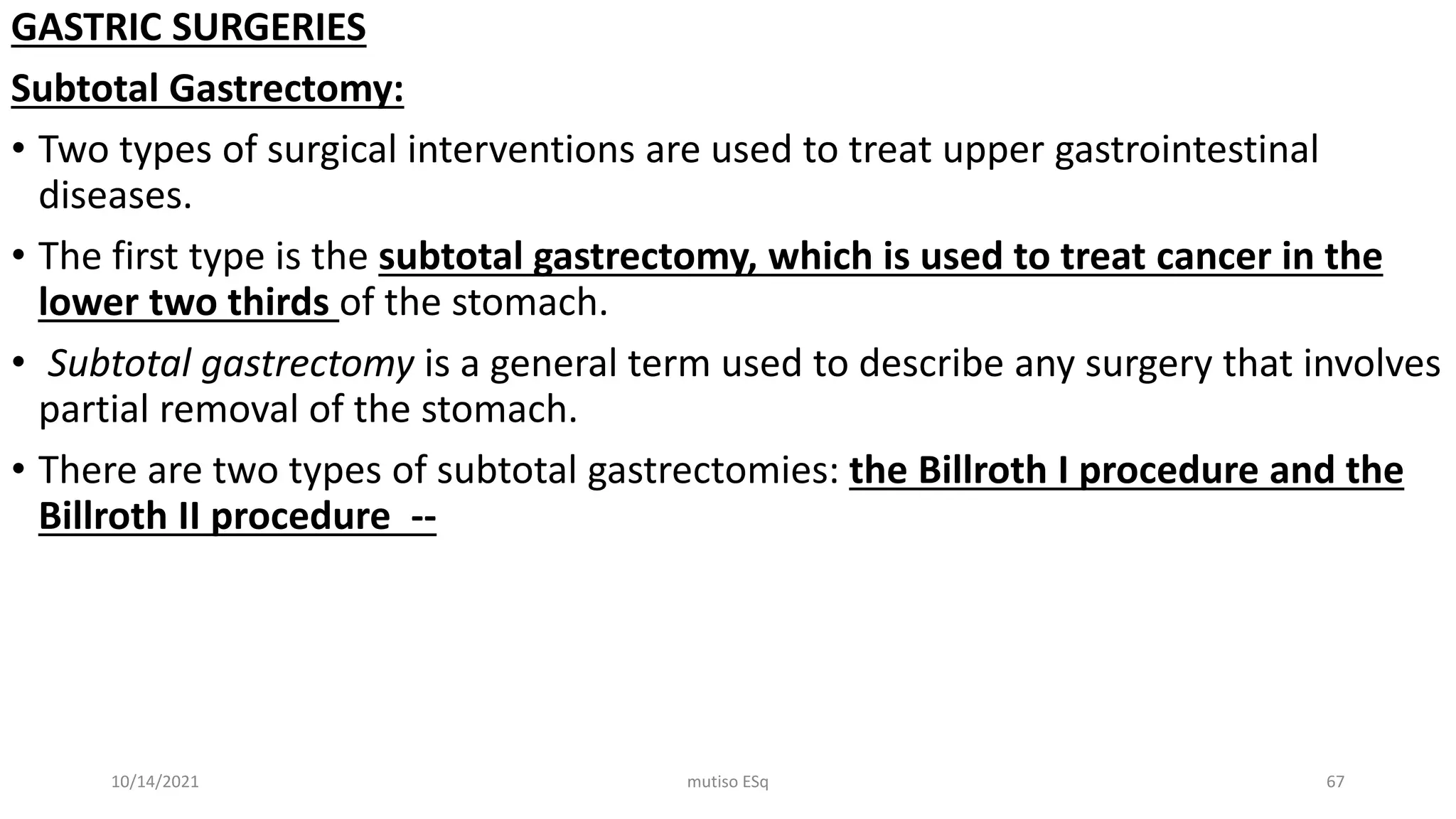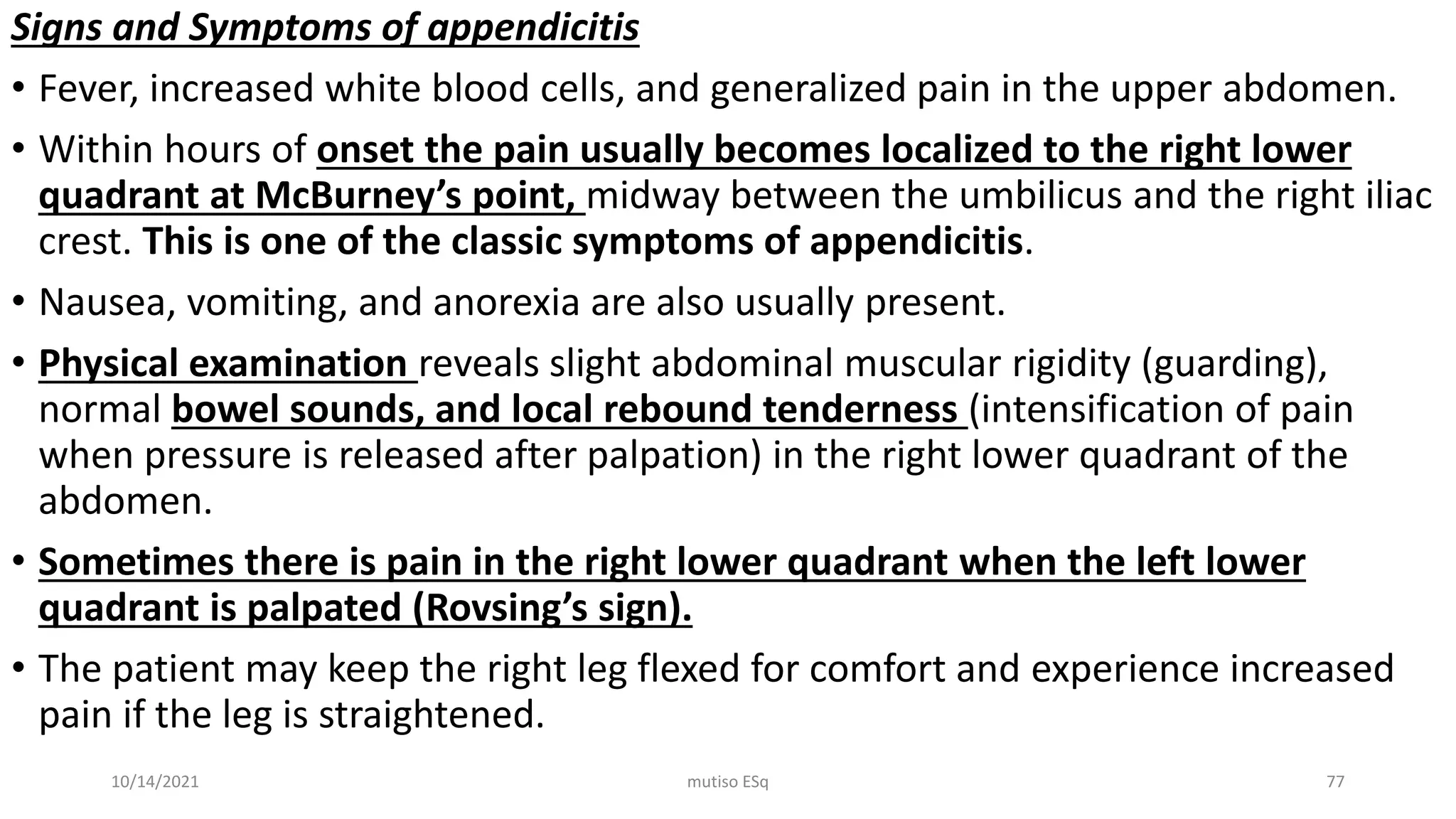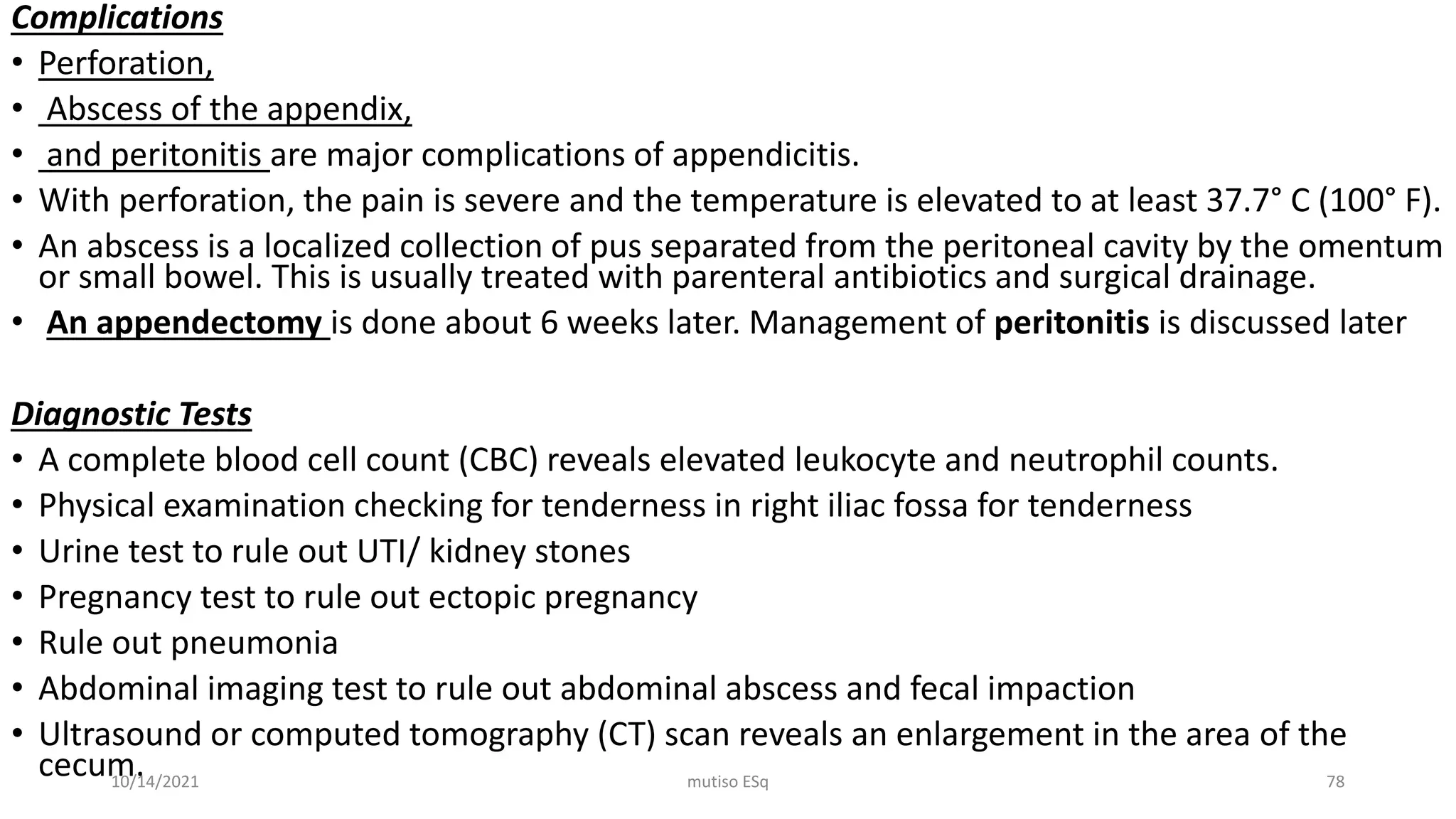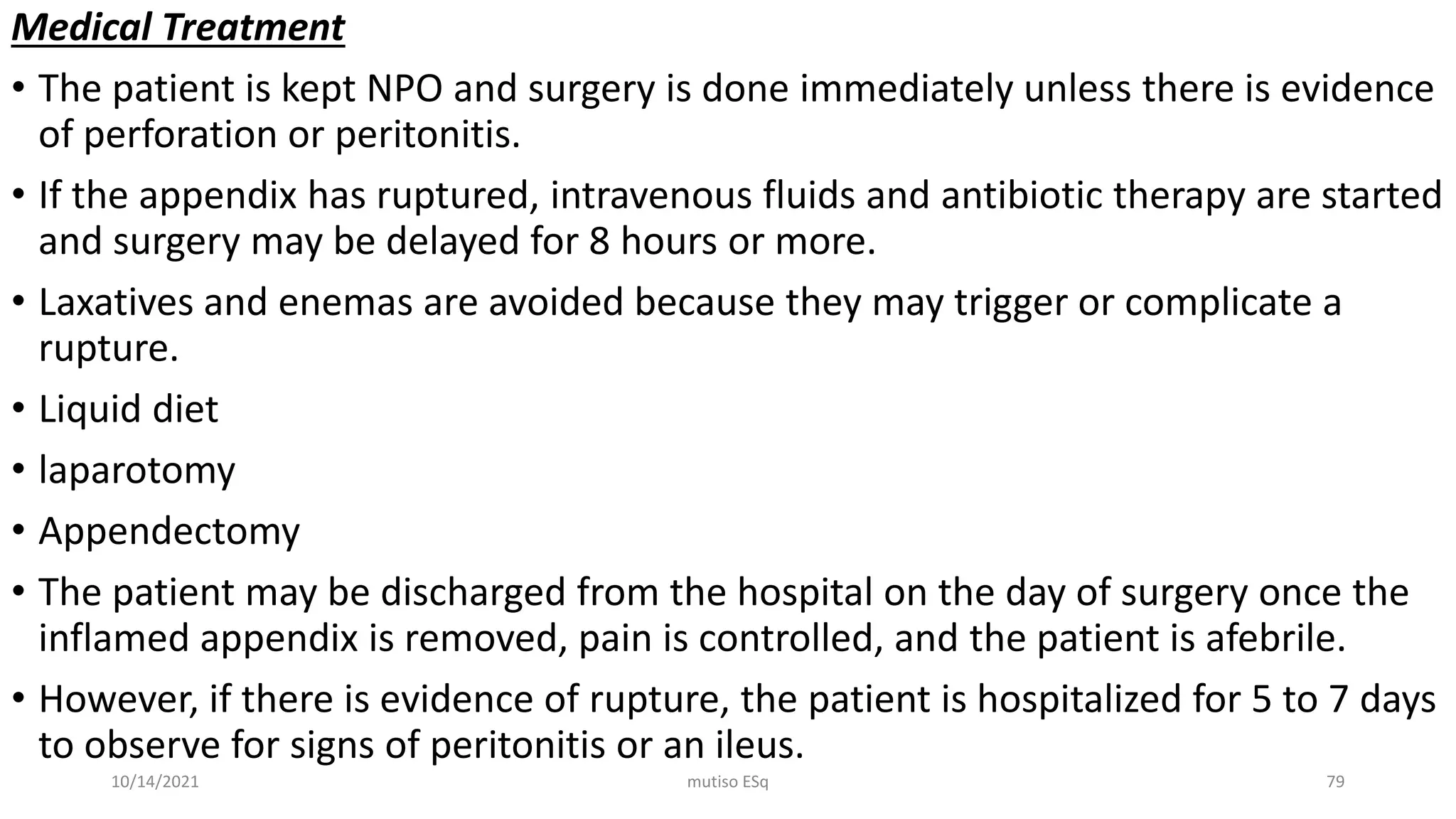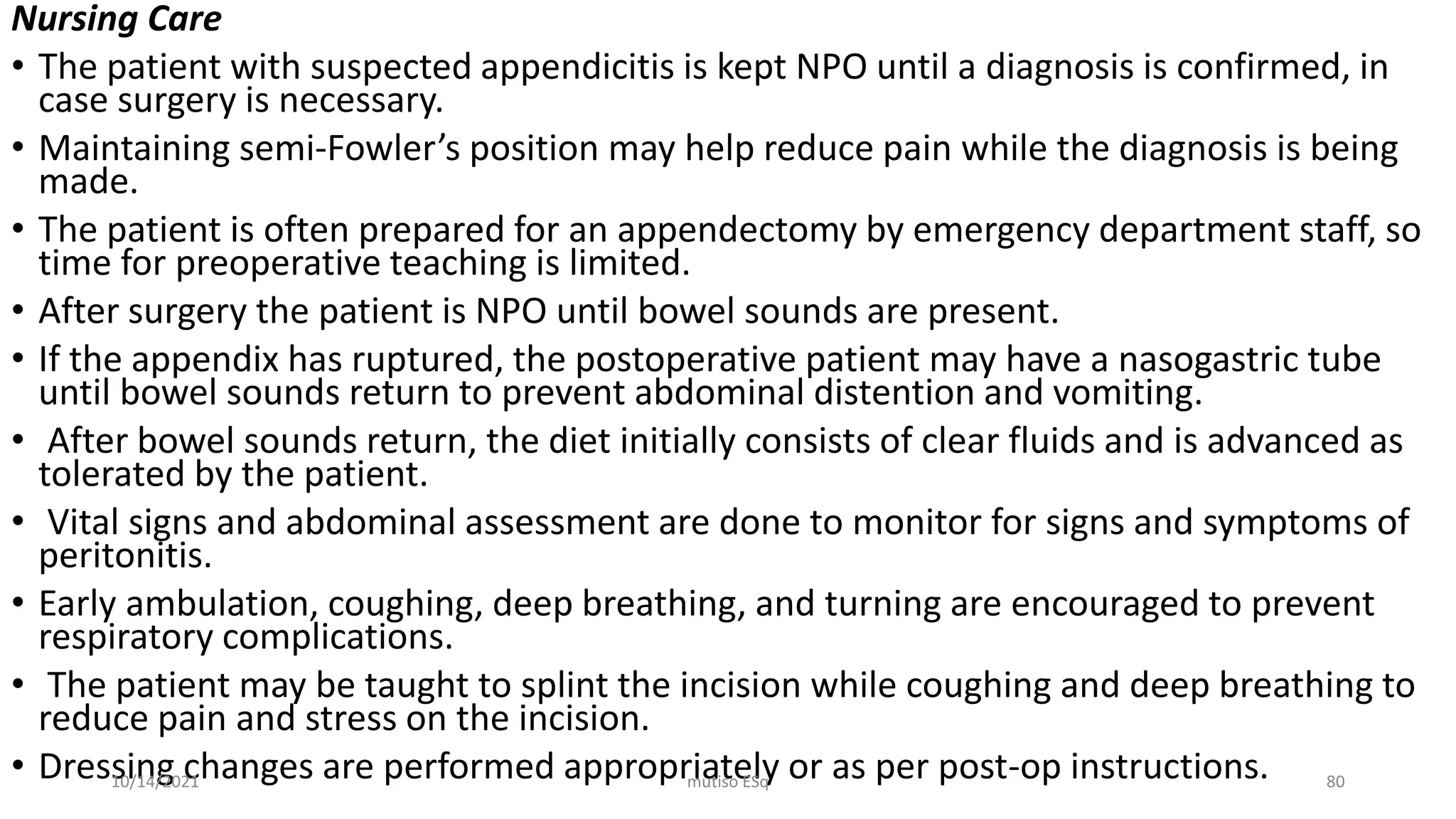This module covers the management of gastrointestinal (GIT) disorders. It aims to enable learners to promote health, prevent illness, and rehabilitate patients with GIT issues. Key topics included are the prevention and management of oral disorders, gastritis, peptic ulcers, pancreatitis, hernias, inflammatory bowel disease, liver diseases, and cancers of the esophagus, stomach, and colon. Teaching methods incorporate group discussions, lectures, demonstrations and role plays using resources like whiteboards, laptops and textbooks. Assessment includes formative assignments and summative promotional exams.
